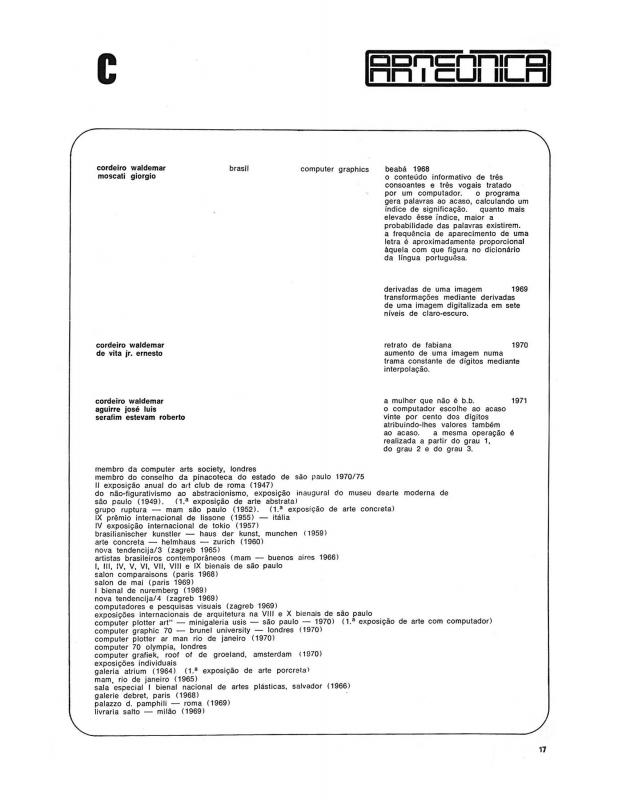This text is the introduction to the exhibition Brasil High Tech held at the Galeria de Arte do Centro Empresarial Rio (Rio de Janeiro, 1986). The importance of this exhibition was that it brought to light other facets of artwork produced in the 1980s. That is, it featured work that had nothing to do with the Italian Trans-avantgarde or with Conceptual art, German Expressionism, or the much promoted “return to painting.” Eduardo Kac introduces works and artists that are investigating different types of sensory experiences through new technologies, in other words, new forms of creating art and artistic enjoyment that fall in with several ongoing investigations. One example is communication art, which laid the foundation for an “aesthetics of communications” (Fred Forest). As a pioneer of digital and transgenic art, Eduardo Kac began his investigation of new media with holography and video poems, thus obtaining instruments of political action via literature, and data to be used for his exploration of transgenic art. This article is one in an anthology of texts collected in his book, Luz & Letra, written during the 1980s, and published in Brazilian journals and newspapers. Luz & Letra offers a range of art and technology in Brazil, including a chronology, an introduction by Abraham Palatnik and a preface by Paulo Herkenhoff. Using Rio de Janeiro as his base, the artist Eduardo Kac (b. 1962) involuntarily began his art life in the midst of what was known as “Geração 80,” characterized by reviving a form as obsolete (at the time) as painting. He was one of Brazil’s pioneers in investigating technology and the art scene. Kac is currently a professor in the field of art technology at the Art Institute of Chicago, in the United States.For other examples of Eduardo Kac’s contributions and perspectives on these matters, see “Origem e desenvolvimento da arte robótica” [doc. no. 1111127], “As três dimensões do signo verbal” [doc. no. 1111228], “GFP Bunny” [doc. no. 782231], “Microponto, microficha, videodisco: a arte high-tech em espaço microscópico” [doc. no. 1110966], and “Eduardo Kac: telepresença problematiza a visão” [doc. no 1111128].
As recognized by Kac, the first texts in Brazil on technological approaches of this kind were written and applied to his art practice in 1970 by Waldemar Cordeiro—a pioneer in the use of the computer as a vehicle for visual information. One of these is entitled “Computer plotter art - primeira mostra na América Latina” [doc. no. 1110487], and the other is specifically on electronic art, which the artist/writer called “Arteônica” [doc. no.1110836]. The poet Augusto de Campos was an artist linked to Concrete art who wrote on his experience, which began in 1953 with conventional types of art and moved into the use of holograms, in “Do tipograma ao videograma” [doc. no. 1111025].








